the types of woods and metals used in my pieces and how to care for them.

ALUMINUM 6063-T5 alloy
Aluminum jewelry is not seen very often, but its qualities outweigh many other jewelry metals. It is lighter than most metals, making it the perfect choice if you like big earrings but can't handle the weight that silver/gold/copper earrings have. The aluminum I work with is alloyed with magnesium and silicion, with no copper or nickel, making it perfectly hypoallergenic for the common wearer. Aluminum has a similar finish color to silver in luster and brightness, almost indistinguisable.
SOURCE: various
FINISHES: polished, brushed, hammered
CARE: little maintenance since aluminum never tarnishes, occasional re-polishing if the aluminum is scratched by steel or harder metals when storing

AMBOYNA (NARRA BURL) pterocarpus indicus
Heartwood can vary widely in color, ranging from a golden yellow to a reddish brown. Pale yellow sapwood is clearly demarcated from the heartwood. Quartersawn surfaces display ribbon-stripe figure, and the wood is also seen with mottled, beeswing, or curly figure. Narra burl is full of well-defined knot clusters, and the highly valued wood is known as Amboyna.
SOURCE: Southeast Asia, mainly Laos
FINISHES: non-toxic mineral oil + beeswax
CARE: if wood becomes dull, sand lightly with 400grit sandpaper and refinish with mineral oil or linseed oil.
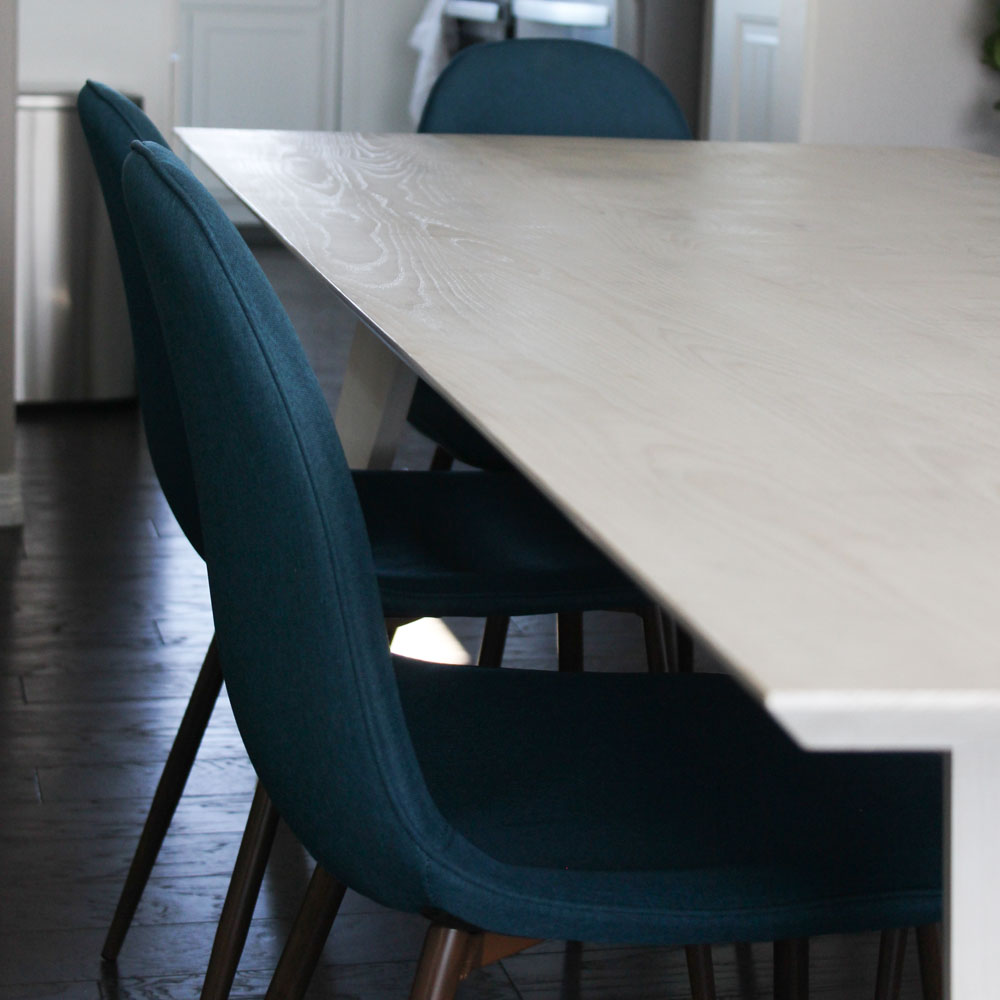
ASH fraxinus nigra
Heartwood is a light to medium brown color. Sapwood can be very wide, and tends to be a beige or light brown; not always clearly or sharply demarcated from heartwood.
SOURCE: Northeastern United States and Eastern Canada
FINISHES: bleach + whitewash + water-based polyurethane; non-toxic mineral oil + beeswax
CARE: if wood becomes dull, sand lightly with 220grit sandpaper and refinish with water-based polyurethane or mineral oil only
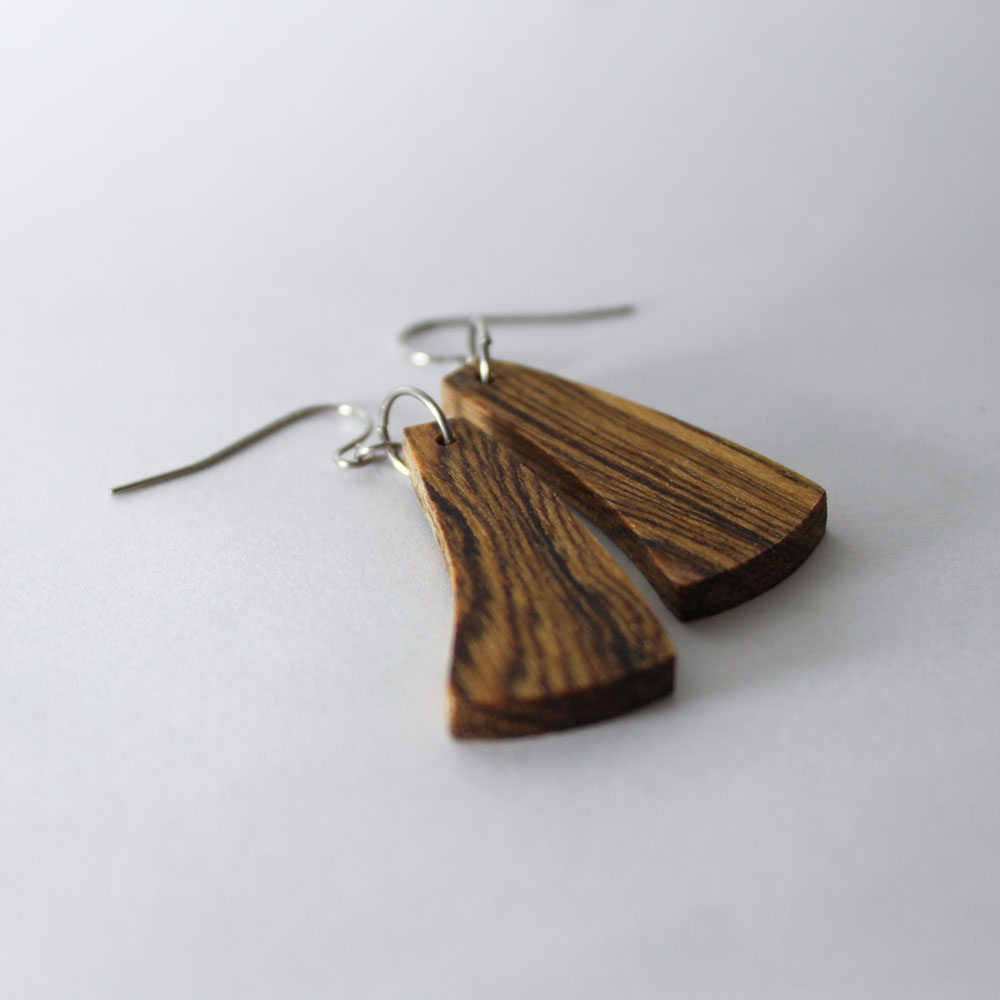
BOCOTE cordia spp.
Has a yellowish brown body with dramatic dark brown to almost black stripes. Color tends to darken with age. Also, the grain patterning can be quite striking, particularly on flatsawn areas. It’s not uncommon to see many “eyes” and other figuring in Bocote.
SOURCE: Mexico and Central/South America
FINISHES: non-toxic mineral oil + beeswax
CARE: if wood becomes dull, sand lightly with 400grit sandpaper and refinish with mineral oil or linseed oil.

KOA acacia koa
Color can be highly variable, but tends to be medium golden or reddish brown, similar to Mahogany. There are usually contrasting bands of color in the growth rings, and it is not uncommon to see boards with ribbon-like streaks of color.
SOURCE: Hawaii, gifted to me by a fellow woodworker in Lubbock, wood nearly 30-40 years old.
FINISHES: non-toxic mineral oil + beeswax
CARE: if wood becomes dull, sand lightly with 400grit sandpaper and refinish with mineral oil or linseed oil.
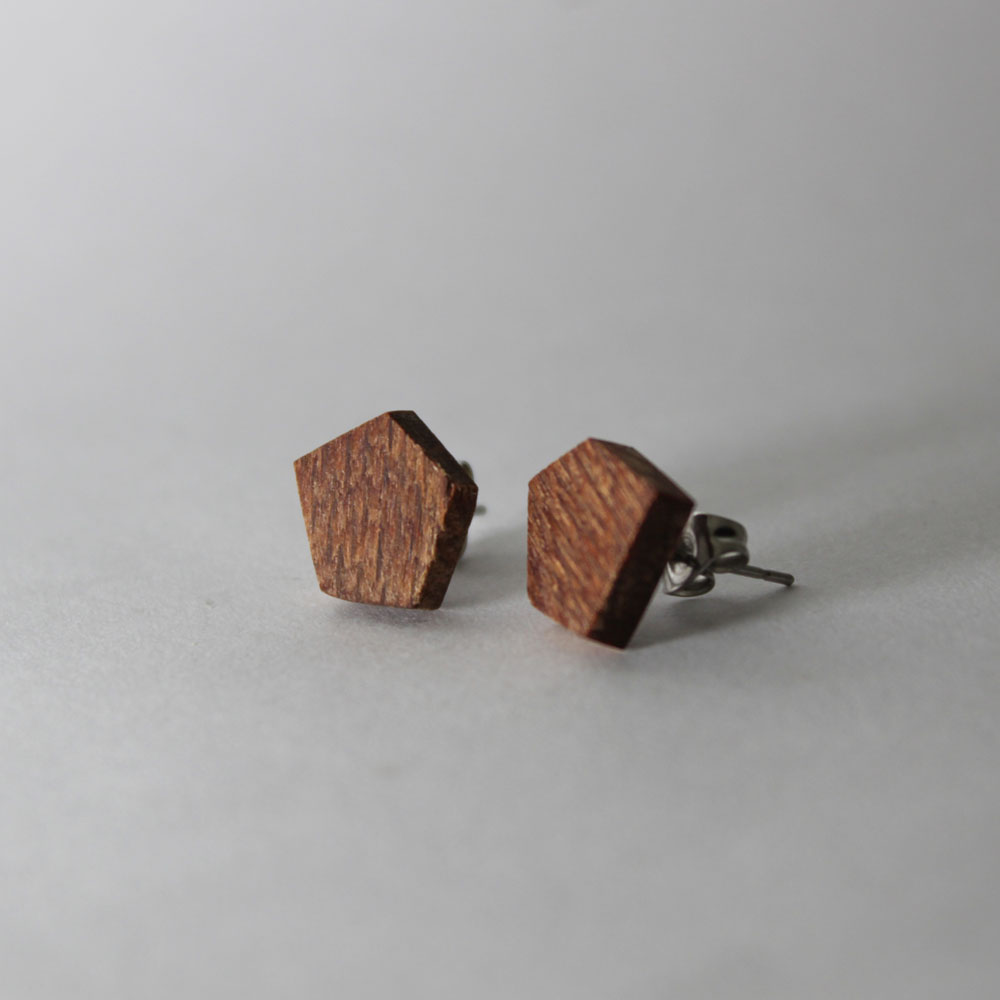
LEOPARDWOOD roupala montana
Has a very conspicuous flecking that gives this wood its namesake. The wood itself is a medium to dark reddish brown with grey or light brown rays, which resemble the spots of a leopard.
SOURCE: Central and South America
FINISHES: non-toxic mineral oil + beeswax
CARE: if wood becomes dull, sand lightly with 220grit sandpaper and refinish with mineral oil or linseed oil.
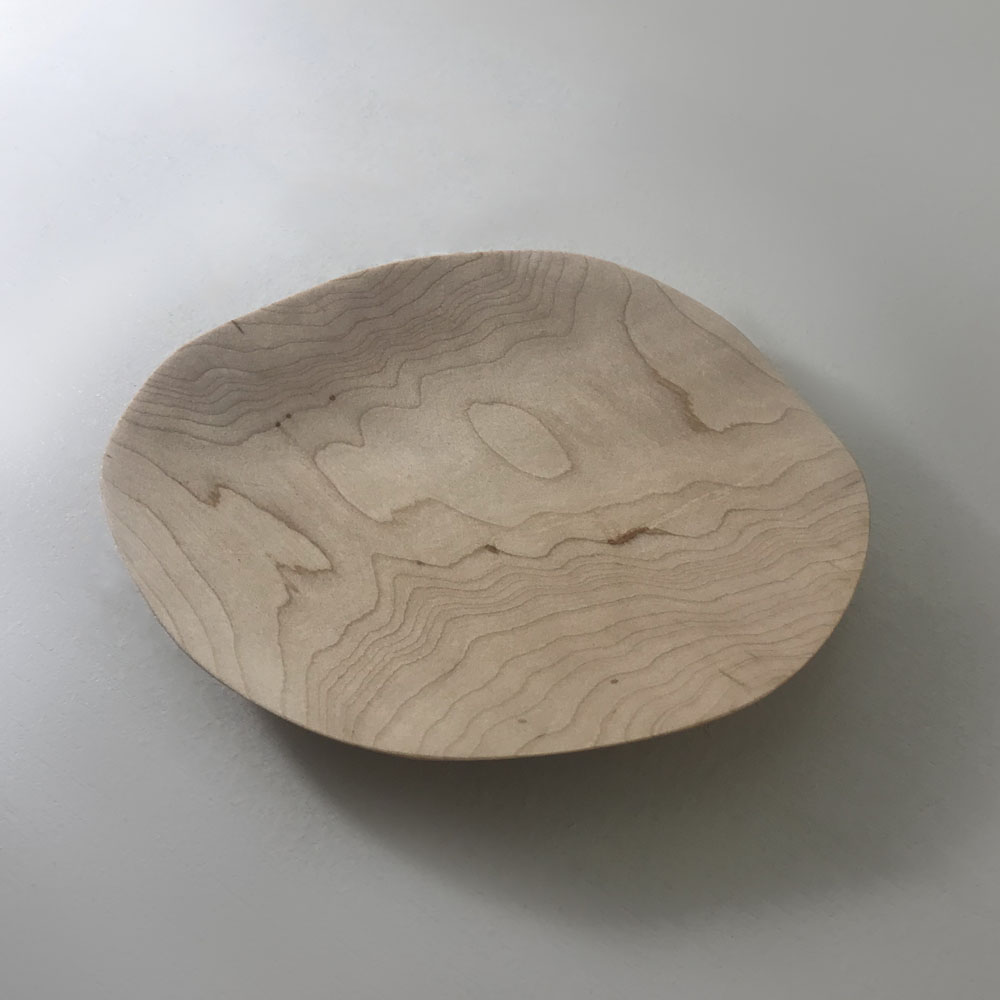
MAPLE acer saccharum
Unlike most other hardwoods, the sapwood of hard maple lumber is most commonly used rather than its heartwood. Sapwood color ranges from nearly white, to an off-white cream color, sometimes with a reddish or golden hue.
SOURCE: Northeastern North America
FINISHES: non-toxic mineral oil + beeswax
CARE: if wood becomes dull, sand lightly with 220grit sandpaper and refinish with mineral oil or linseed oil.
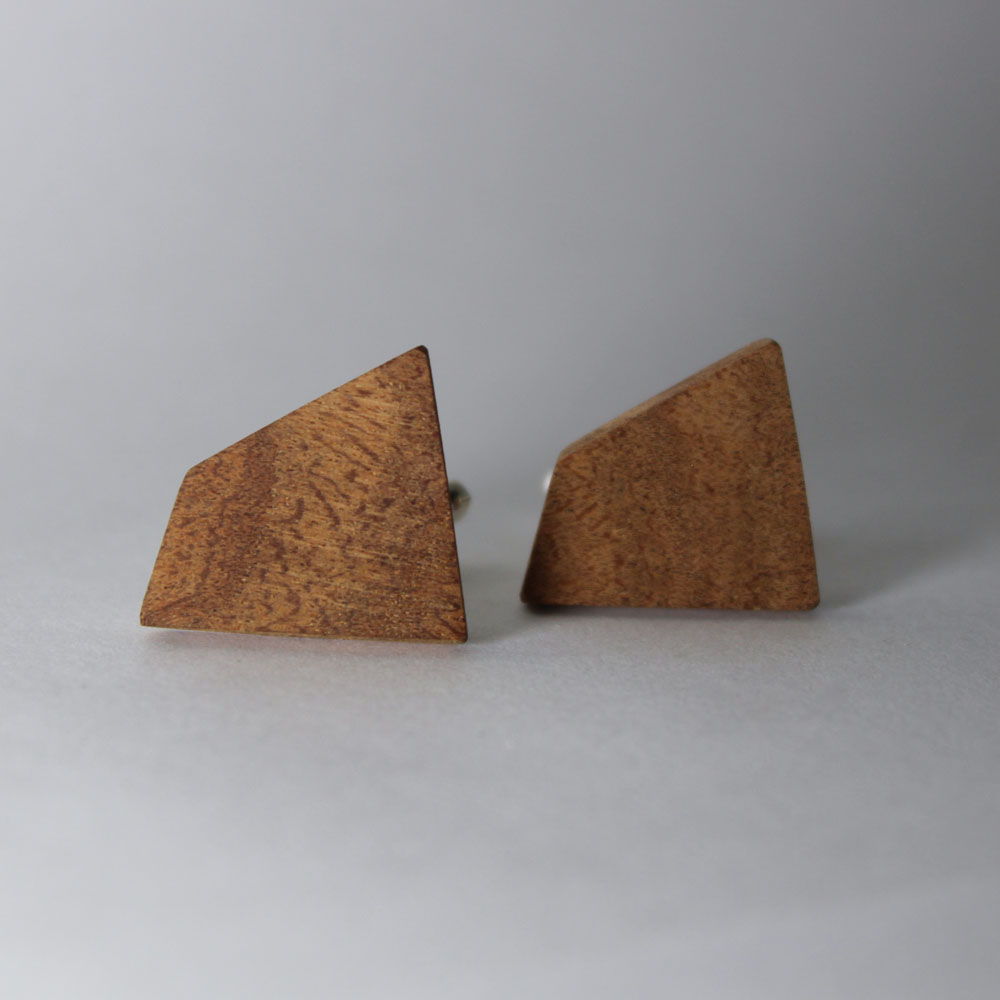
MESQUITE prosopis glandulosa
Heartwood tends to be a reddish brown, which darkens with age. Sapwood is yellow in color, and tends to be thin. This wood is commonly found in Texas and is known for its scraggly branches.
SOURCE: Southwestern North America, gifted to me by a fellow woodworker in Lubbock.
FINISHES: non-toxic mineral oil + beeswax
CARE: if wood becomes dull, sand lightly with 220grit sandpaper and refinish with mineral oil or linseed oil.

MIMOSA albizia julibrissin
Color varies from light brown to deeper golden or reddish brown. Sapwood is pale yellow and is demarcated from the heartwood. Color darkens with age.
SOURCE: Originally from Asia, this tree is planted ornamentally. I cut down my stock of mimosa from a dead tree in my front yard that died after an aggressive frost in 2009, sustainably harvested. I chainsaw and cut stock to use in smaller items like earrings and rings.
FINISHES: non-toxic mineral oil + beeswax
CARE: if wood becomes dull, sand lightly with 220grit sandpaper and refinish with mineral oil or linseed oil.
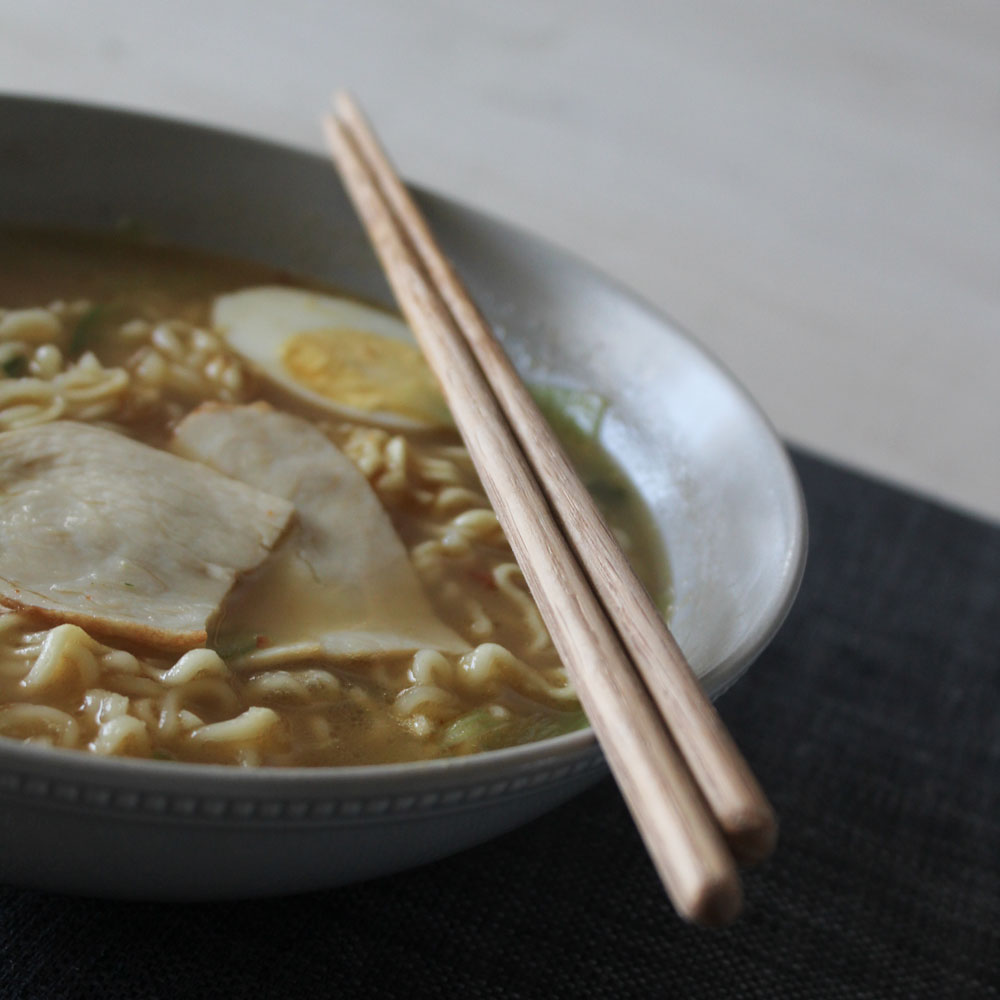
OAK, WHITE quercus alba
Heartwood is a light to medium brown, commonly with an olive cast. Nearly white to light brown sapwood is not always sharply demarcated from the heartwood. Quartersawn sections display prominent ray fleck patterns.
SOURCE: Eastern United States, the log I have was harvested by a farmer East of Lubbock. I chainsaw and mill this wood myself for smaller pieces, but it can be found in larger quantities for furniture.
FINISHES: non-toxic mineral oil + beeswax
CARE: if wood becomes dull, sand lightly with 220grit sandpaper and refinish with mineral oil or linseed oil.
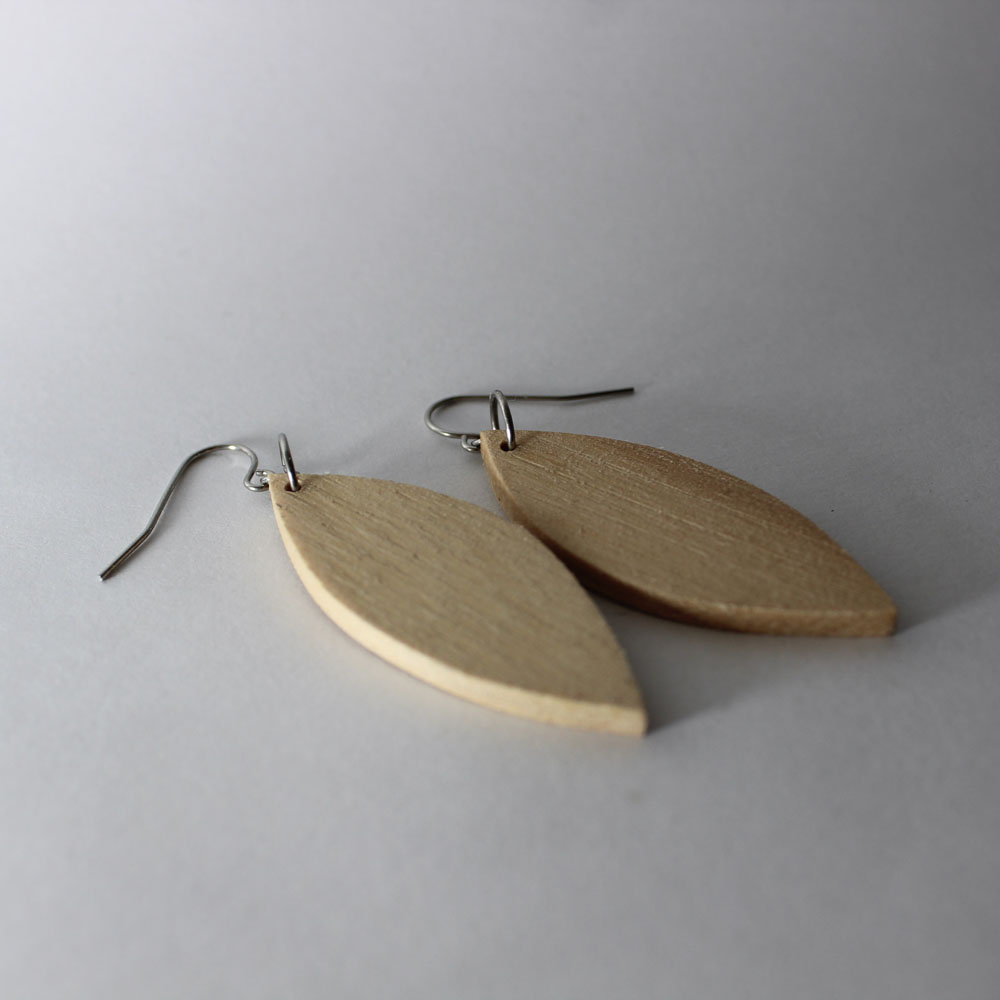
PECAN carya illinoinensis
Heartwood tends to be light to medium brown, with a reddish hue; sapwood is a paler yellowish brown. Colors vary on smaller pieces such as earrings, can range from light brown to some grays.
SOURCE: South-central United States and Mexico, the piece I use is a log harvested from a dying pecan tree outside of the Lubbock courthouse nearly 20 years ago. This piece was gifted to me in 2019.
FINISHES: non-toxic mineral oil + beeswax
CARE: if wood becomes dull, sand lightly with 220grit sandpaper and refinish with mineral oil or linseed oil.
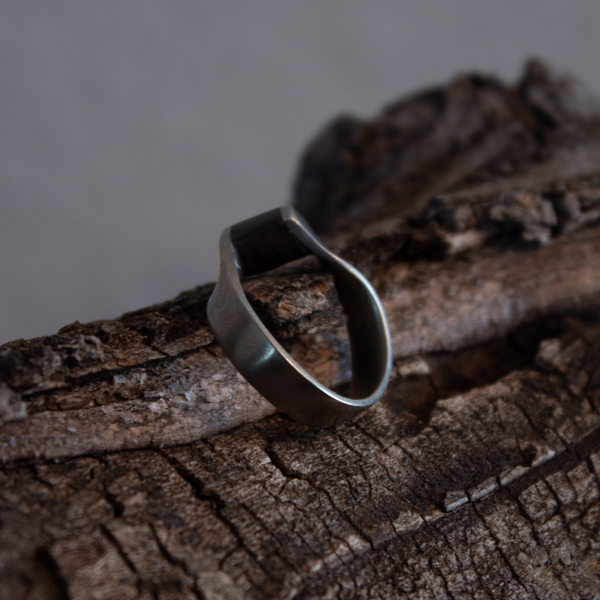
TITANIUM TC4 grade 5 alloy
With one of the strongest stregth to weight ratios, titanium is an excellent choice for lightweight and long-lasting jewelry. The alloy that I use is 90% titanium with 6% aluminum, 4% vanadium, less than 0.25% iron, and 0.2% oxygen, the most common alloy used for aerospace and biomedical implants alike. Since titanium is completely biocompatible and inert, its use as jewelry is common for hypoallergenic wearers or anyone who might be in a semi-chemical environment such as a swimming pool for long periods.
SOURCE: various
FINISHES: polished, brushed, hammered
CARE: requires very little maintenance beyond an occasional repolish or brush if scratches emerge.
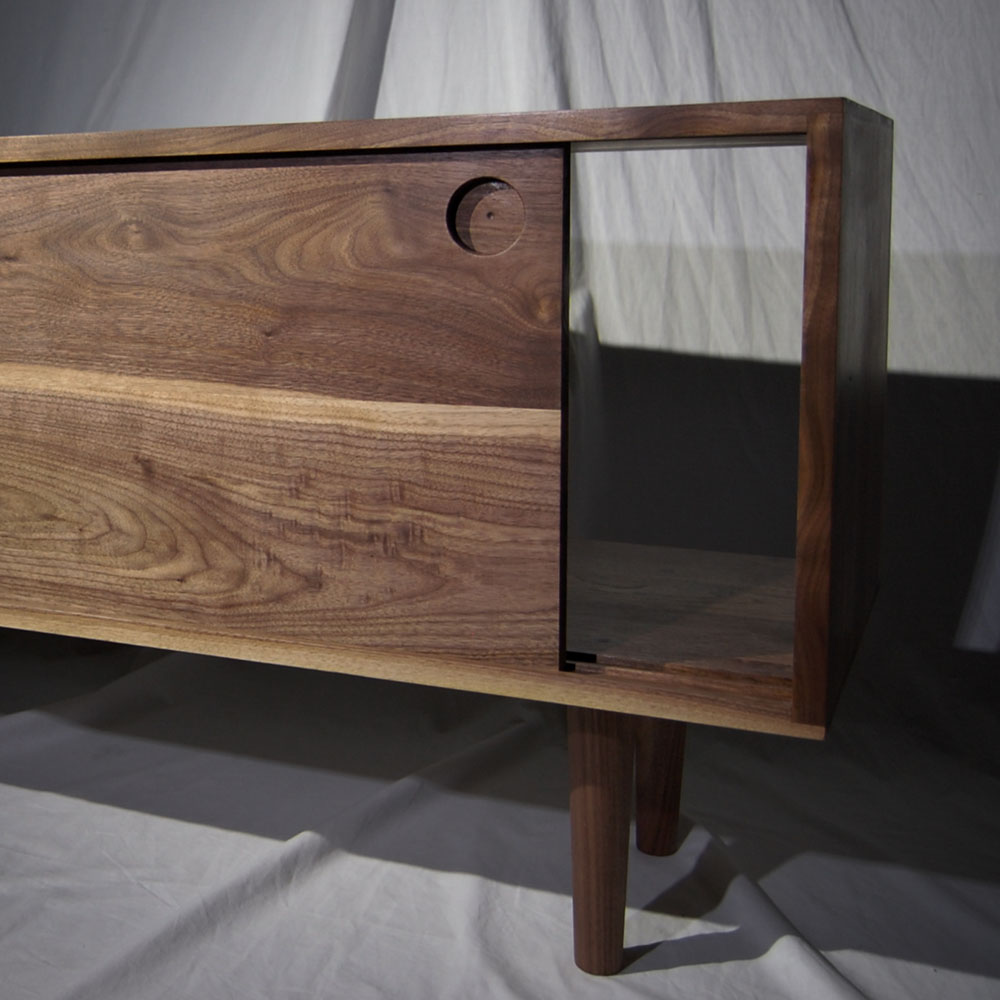
WALNUT juglans nigra
Heartwood can range from a lighter pale brown to a dark chocolate brown with darker brown streaks. Color can sometimes have a grey, purple, or reddish cast. Sapwood is pale yellow-gray to nearly white. Figured grain patterns such as curl, crotch, and burl are also seen.
SOURCE: American walnut, central to eastern United States
FINISHES: non-toxic mineral oil + beeswax; furniture wax; wipe-on polyurethane
CARE: if wood becomes dull, sand lightly with 220grit sandpaper and refinish with mineral or linseed oil
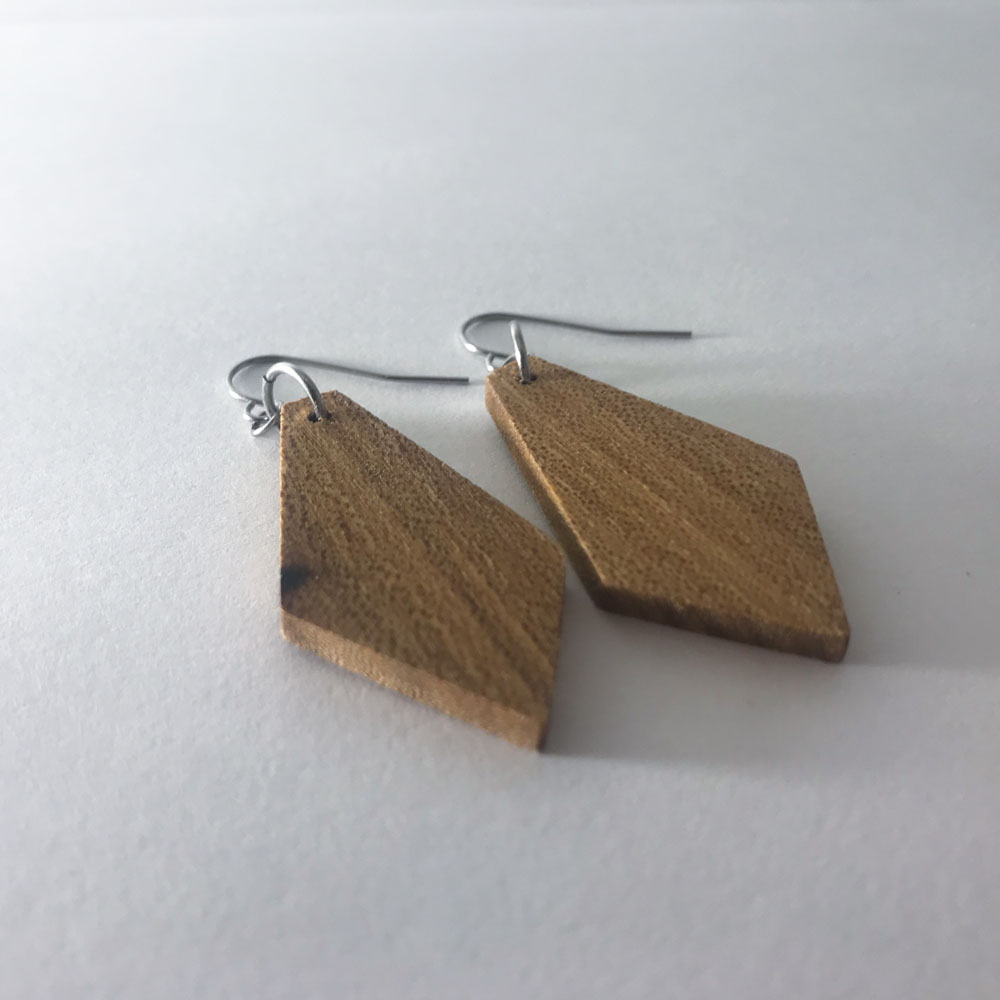
WINGED ELM ulmus alata
Heartwood is light to medium reddish brown with hints of green. Paler sapwood is usually well defined. The winged elm variety is known for its scraggly wing-like lower branches. This wood is difficult to find as it is suseptible to Dutch elm disease.
SOURCE: Southern United States, these logs were harvested from Lubbock, Texas nearly 10 years ago. I found a large stack of logs in my backyard, which I chainsawed and milled to be used in smaller jewlery pieces.
FINISHES: non-toxic mineral oil + beeswax; furniture wax; wipe-on polyurethane
CARE: if wood becomes dull, sand lightly with 220grit sandpaper and refinish with mineral or linseed oil